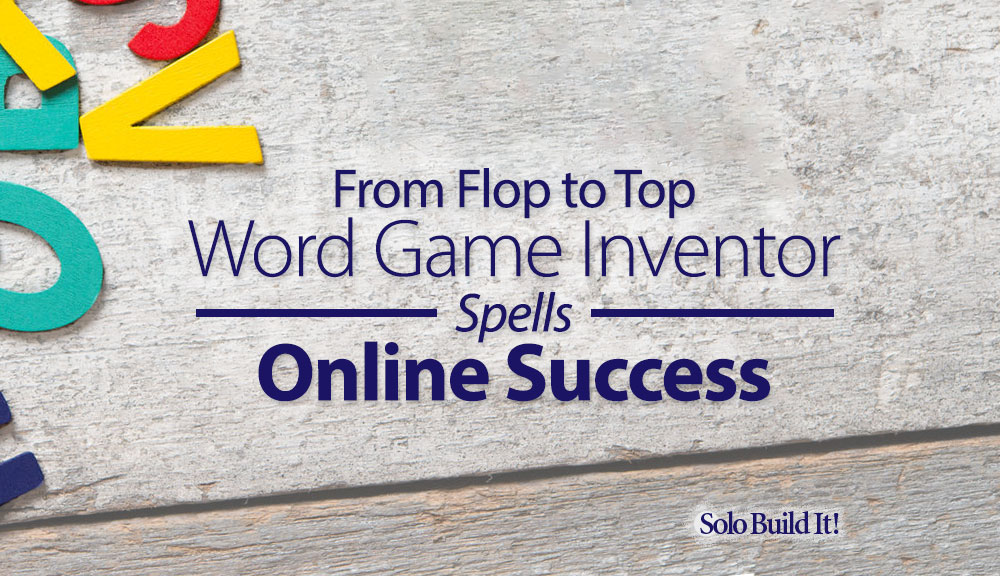
I love waking up every morning knowing I have a great job to go to, just around the corner from the kitchen.Ann Richmond Fisher from word-game-world.com
Ann Richmond Fisher loves anything to do with words: word games, word puzzles, word meanings, word spellings. She even invented some pretty cool word games, like ZigZags, BuzzWords and Triangulairs.
She reasoned that a lot of other people like words too. So she turned to the Internet. She wanted to share her puzzles and games, and make some money with them as well.
The only problem? No one came to visit her site. With her first website, she sold one single eBook in two years.
Her second site, while looking more professional, didn’t do much better. It wasn’t for lack of content. She had posted lots and lots of puzzles and games. Something was missing. But what, Ann wondered?
As luck (or fate?) would have it, she met a solopreneur who hired her to write content for his math website. (Turns out that Ann loves words and numbers!) Ann was impressed with the amount of traffic his website received. What was his secret? Would he share it with her?
He did. And now, Ann shares her solopreneur success secret with us.
1. Ann, I believe your first two attempts at building an online business failed. What did you do differently in your third attempt? What were the main factors that helped you succeed this time?
In fact, I learned the whole process of choosing a sound domain name, planning a site, building good pages and optimizing them for search engines through SBI!’s excellent training.
I didn’t know much of anything when I started my first two sites. No wonder they failed!
Instead, the main reason for failing is the absence of an integrated approach where you…
- receive step-by-step training in written, video or audio format
- follow the proven Content Traffic PREsell Monetize process
- have access to all the necessary tools in one single place
- are part of a helpful community of like-minded solopreneurs, and
- get free unlimited first-class technical support.
With SBI!, you get all of the above. Granted, the SBI! approach isn’t as “sexy” as what other site builders might promise you (just think of Wix’s Super Bowl ads with their slogan #ItsThatEasy).
Putting up a great looking website is indeed easy. But all you have then is a website. No traffic. No visitors who trust and like you. No customers. No income.
The hard parts are the research and planning, the traffic-building and the monetization (converting your visitors into income). That’s why SBI! provides not just the tools, but also the process and guidance for building a long-term online business that generates income and equity.
And that’s why solopreneurs like Ann succeed when they build their business with SBI!.
2. How did you know that word games and word spelling were the right niche for you and had great business potential?
I suppose there were no guarantees that these were the right niches for me. But by looking at supply/demand/profitability numbers before building the sites, I knew the odds were pretty good.
Plus, since I love word play, word puzzles, word meanings, etc., I was excited about the content I’d be writing. I also knew a lot of the process was up to me — hard work, lots of good content, and perseverance.
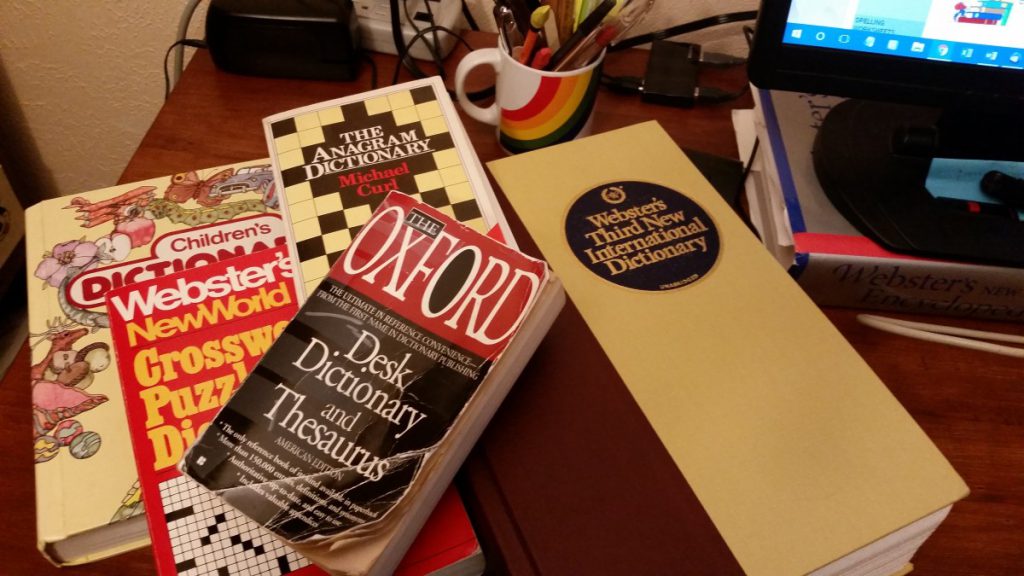
You start by writing a list of your interests, hobbies, passions, skills learned in your job, etc. You then select the top 3 from your list and research these potential niches further.
The first part of your research is performing in-depth keyword research. That’s what Ann refers to when she talks about “supply/demand/profitability numbers.”
How do you do this? You use SBI!’s Brainstorm It! tool. It brings back hundreds of keywords (aka “topics”) related to your niche concept. For each keyword, it tells you how many people search for it (demand) and how much competition there is (supply).
The higher the demand and the lower the supply, the more profitable a keyword is. The more keywords with higher demand and lower supply (and therefore higher profitability), the better is the overall profitability of that niche.
With smart filter and evaluation functions, Brainstorm It! helps you decide if your business niche is too broad, too narrow or just right.
The numbers, however, paint only part of the picture. To make your final decision if a topic is right for you, you also need to answer these questions:
- How monetizable is your niche?
- Are you passionate about the topic?
- Are you knowledgeable about the topic?
- How much time do you have to work on your website and online business?
Sound overwhelming? Don’t worry. The SBI! Action Guide leads you through the whole process, step-by-step.
3. You provide lots of information and resources for free. How do you “upgrade” people from being free-content seekers to paying customers?
As soon as I added spelling bee content to Spelling-Words-Well, I saw a big increase in traffic. I started receiving lots of letters from teachers and administrators, asking for advice in their specific situations, asking where they could find more spelling bee words, and so on. I sort of “fell into” the need for quality spelling bee word lists.
Over the past few years, I have (rather painstakingly!) compiled several word lists that include graded words with definitions, sentences, parts of speech and language of origin.
Thanks to my son’s help, I have a database in which I track every word I’ve used, so I do not repeat words across lists. My loyal spelling bee customers appreciate the high quality of my content, and many come back to me year after year for the newest list.
(By the way, not every school wants, or can afford, to participate in Scripps’ National Spelling Bee programs, so I have become the alternative. When I started this website, I never saw that one coming!)
So to answer your question, I’ve upgraded the free seekers to paying customers in these ways:
1) I watch where my traffic is.
2) I always reply to questions as soon as possible.
3) I offer top-notch resources that match that traffic and visitors’ queries.
To be honest, I think I still fall short of the monetization potential for my websites. I plan to focus more on that in the coming months.
Lesson 1: Analyze
As you build more pages, your traffic starts to grow. Once you see a daily stream of visitors, it’s time to shift some of your focus from building new content to analyzing the existing content.
Which pages are the most popular ones? Where do your visitors stay the longest? Those are the topics to build upon, and your best areas for turning visitors into paying customers.
Lesson 2: Listen
Another great resource to help you optimize your content? Your visitors. They will tell you what they want and need. You just need to listen and act upon it, as Ann did.
Lesson 3: OVERdeliver
Whether it’s your content or how you treat your visitors, strive to be the best in your niche.
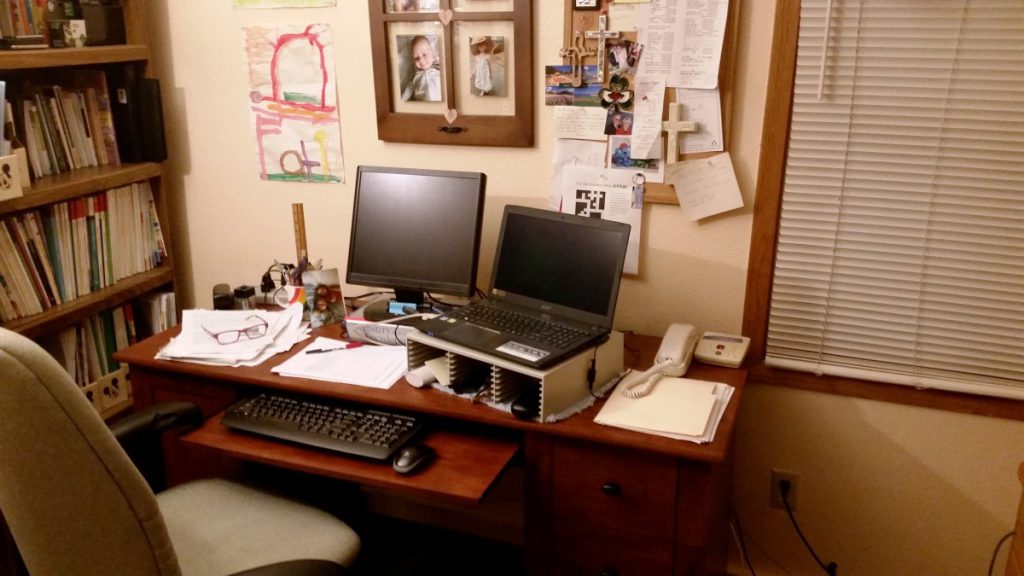
4. You built your first SBI! business, www.word-game-world.com with a partner, and your second one, www.spelling-words-well.com, on your own. What are some pros and cons for each approach?
One of the biggest advantages of working with a partner is the ability to brainstorm and figure out things together. Two heads are better than one, as the saying goes.
It’s also nice to divide the workload. I usually wrote the content and my partner posted everything. One issue that we ran into was that I had loads of time to put into the site and wanted it to become a major revenue stream. My partner already had a couple of jobs and websites and could only devote a few hours a week to it. That was a major difference.
When working alone, the biggest advantage is also the biggest challenge. I get to do it all, and I have to do it all!
I enjoy the autonomy and flexibility of working on whatever suits me on any given day. I don’t have to schedule chats with a partner. I can work as much or as little as I choose. I can immediately write new content, change the look and feel of the site, etc. without waiting for a partner to agree with me.
But, when I make a poor business decision, I have no one to blame but myself. And there’s no one to share the workload with.
Ann’s case of having built her first business together with a partner from the get-go is rather unusual. Her assessment of the pros and cons of each approach (solo versus partnership) is spot on.
One thing we’d like to add: if you decide to go the partnership route, work out a written contract with the help of an attorney. Remember that you’re building a business with all the responsibilities and rewards that come with owning a business.
How will you divide the workload? How will you split the revenue? What happens if one of the partners wants to sell the business? Better to agree about these questions before you invest a lot of time.
5. You’ve published several books, in digital and print format. What are your top 3 tips about creating and selling books for people who may be considering this as a way of monetizing?
- Try to determine the market before you write. That isn’t always easy, but if you notice that certain keywords or sections of your site are receiving good, steady traffic, you might just be on to something. There may be a way to make similar content into a book.
- Write high-quality material. Proofread your work and get two more people to proof it, too, before you launch. (Or hire a professional proofreader.) Poor grammar and spelling can be the death of otherwise good content.
-
Find tools to help you produce the actual product. I determined I needed some good PDF software (I use Nitro PDF) so that I could quickly put different sections of the book together, delete pages, rearrange pages, edit text, and more.
This capability is important whether you’re publishing a digital book or a hard-copy book. Amazon’s self-publishing company, CreateSpace, requires the text for books to be in PDF. I also purchased an affordable program that creates 3D cover images for my website (BoxShot 3D; they just released a new version, BoxShot 4).
- Work on marketing! (I know you said three tips, but this is also essential!)
Read the reviews for the top sellers, especially the 2 and 3 star reviews. Take note of what people complain about. This gives you an idea how to make your book better!
Within SBI!, you’ll have access to a whole series of articles about writing, publishing and marketing eBooks (both on your site and in eBook marketplaces, e.g., Amazon Kindle, Nook, Smashwords, etc.). You don’t have to figure it out on your own.
6. Is selling your books your only income stream from your online businesses? If you have other ways of monetizing, what are they and what made you choose them?
Google Adsense is my largest source of income, followed by the eBooks. I occasionally sell a few affiliate products through Clickbank and some spelling bee prizes that I created on Zazzle. I’ve also displayed ads occasionally as an Amazon affiliate.
Mine is a small niche, and it’s been challenging to find good affiliate products to offer. I’m very picky, wanting to offer only high-quality products that fit my market, and so I’ve not been overly successful with options other than eBooks and Adsense.
Other online business owners we interviewed have seen a significant decrease in AdSense income. That’s why it’s so important to have more than one income stream.
So, how do you know which monetization models make sense for your niche? You follow the SBI! Action Guide. Two full DAYs are dedicated to leading you step-by-step through investigating, planning and implementing the monetization models that best fit your niche and personal preferences.
The options range from fully passive models like AdSense advertising to fully active models like selling your services or products.
Even if you’re a seasoned SBI! member (like Ann), we advise you to revisit the Action Guide from time to time. DAYs 4 and 10 (the “Monetization” DAYs) have recently been revamped with more focus on higher paying income models. So, if you’re struggling to increase your $-per-visitor ratio, dive in and get inspired to try new ways!
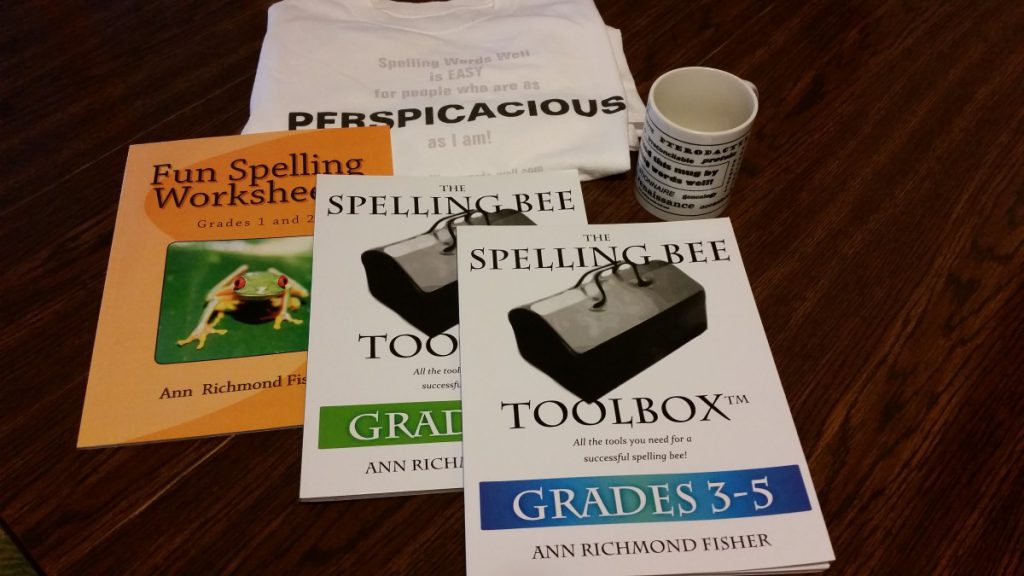
7. On some of your eBook sales pages, you use whiteboard videos as a sales tool. How did you create those videos? How efficient are they in helping you “close the deal”?
The whiteboard videos were produced by a company called “90 Second Explainer Videos.” They had approached me and offered to produce these whiteboard videos at a super-low price when they were just starting out.
I didn’t spend a lot of money on them. They add a bit of pizzazz to my sales pages and have paid off with slightly increased sales.
Exact numbers vary, but for example on this infographic titled “37 Video Marketing Statistics You Need To Know For 2017,” you’ll find stats like…
- Including video on a landing page can increase conversions by 80%.
- After watching a video, 64% of users are more likely to buy a product online.
So, if you have a product or service to sell, it may be worth following Ann’s example, adding an explainer video to your page.
There are lots of companies out there that produce whiteboard or animated, cartoon-like explainer videos. Prices range from a few hundred to several thousand dollars per video, so spend some time to find a company that suits your budget.
Or use a service like VideoScribe or GoAnimate to produce an explainer video yourself!
To measure the impact of adding a video to your sales page, we recommend you set up an A/B split test. Google Content Experiments offers a free and easy way to do this.
8. What has been your biggest challenge so far as a solopreneur?
I don’t talk about this much, but I have multiple sclerosis. Thankfully, mine is a mild case and I am able to function almost “normally.” You can’t tell I have M.S. by looking at me or talking with me.
But it slows me down. Fatigue is a big challenge, and sometimes my typing fingers go numb. If I’m really, really fatigued (look up the word lassitude) my mind can get a bit garbled. I have to step away and rest. Occasionally, I have relapses that require strong medications and several weeks away from my work.
M.S. comes with a whole family of symptoms, which I’ll spare you from. But suffice it to say that I spend a chunk of time in medical appointments, and I do a lot of exercising and stretching that help to keep me going. This is time I’d much rather spend on my business!
As a solopreneur who loves her work, I always have lots of ideas for my business. Frequently my brain is going at Type A speed while my body is lagging behind at a Type B pace. That is frustrating.
But I’ve been dealing with M.S. for many, many years through all sorts of circumstances. A good support system — made up of family, friends and my medical team — along with my faith, gets me through the ups and downs of M.S.
Contrary to a “regular” job, your online business adapts to your life circumstances. It develops as fast or slow as your situation allows. Of course it still sucks when you’re brimming with ideas and your body doesn’t want to cooperate. But at least you can allow yourself a break, even an extended one.
Fellow SBI! member Birgit Bradtke had to take a 5 year downtime due to illness. When she was ready to work on her online business again, it was still alive and well. Now she’s growing it faster than ever!
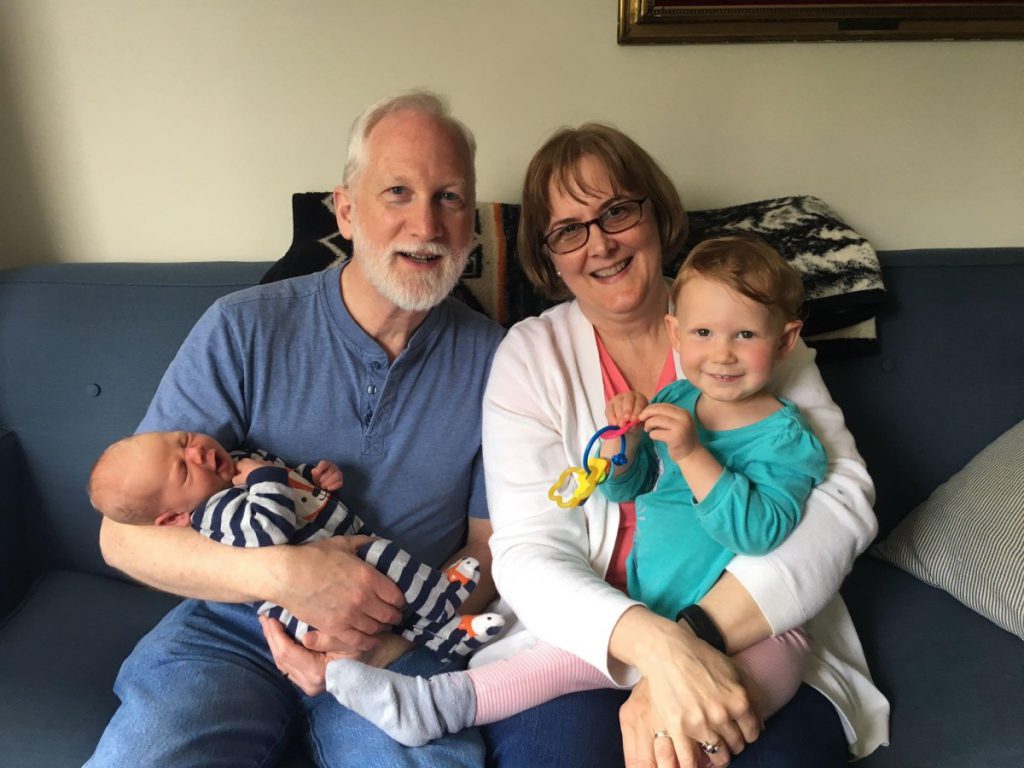
9. What do you enjoy most about being an online business owner? How has it changed you, your life, your family?
I love the independence and flexibility. I love waking up every morning knowing I have a great job to go to, just around the corner from the kitchen. I am probably the perfect example of a tortoise business. I do not make hundreds of thousands of dollars a year. We don’t vacation in Europe or own a Lamborghini.
However, my business income has stabilized our family’s financial situation. It has paid bills when my husband’s job was downsized a few years ago. It buys plane tickets once or twice a year so we can visit our grandchildren in San Francisco and our daughter in Minneapolis.
It buys Christmas presents, and a piece of it ends up every month in my Roth IRA. We’ve remodeled a bathroom and replaced a few windows, too, with my earnings.
Freedom to choose where to live, to work from home, to take a break when you need it, to do something you love and to improve other people’s lives with your work.
10. And finally… What’s your top tip for someone who is just starting a solopreneur career?
Find something you love to do, gather the training and tools you need (i.e., SBI!), and work hard. Just remember to take a break now and then.
- Identify your biggest passion (Having trouble doing that? Talk to SBI! Advisor Doug Lee. He’s known for not letting you “off the hook” until you’ve discovered your passion!)
- Work hard. Know that it takes time to build a real business.
- Give yourself the best chance of success with SBI!’s all-in-one system of tools, training, community and support.
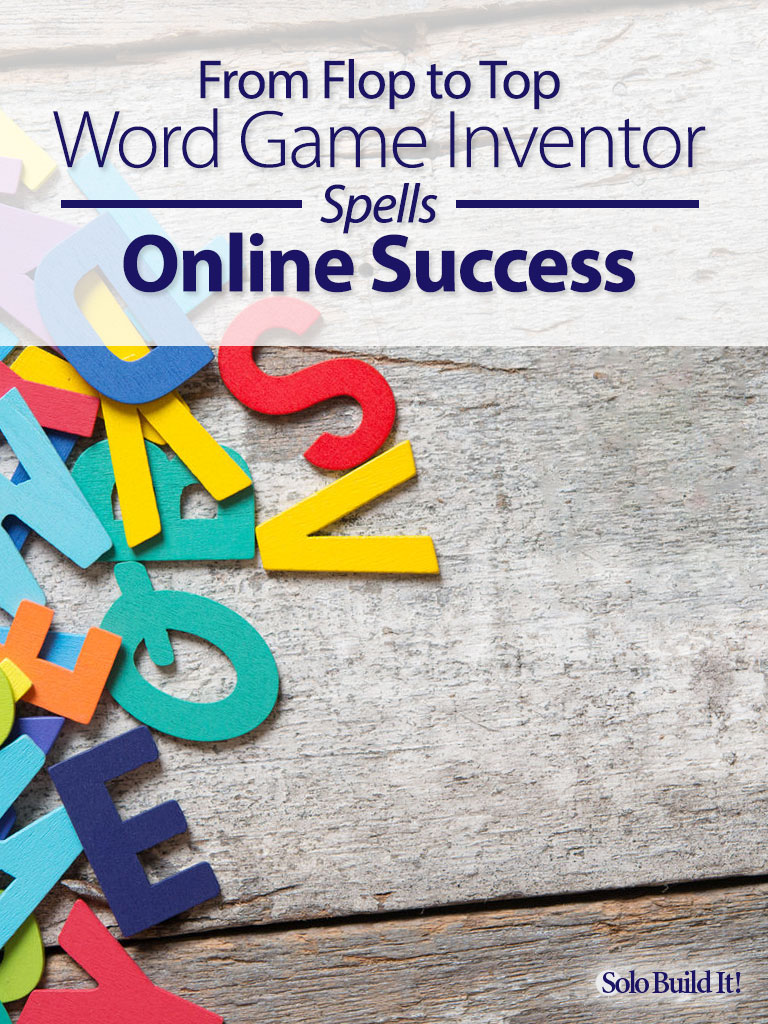
Latest posts by Margit Streifeneder (see all)
- From Zero to 1 Million Fans: A Community-Driven Success Story - October 16, 2025
- Six Figures on Her Terms: A Lifestyle Business Success Story - September 25, 2025
- From Sheds to Sales: A 20-Year Digital Product Success Story - September 11, 2025

